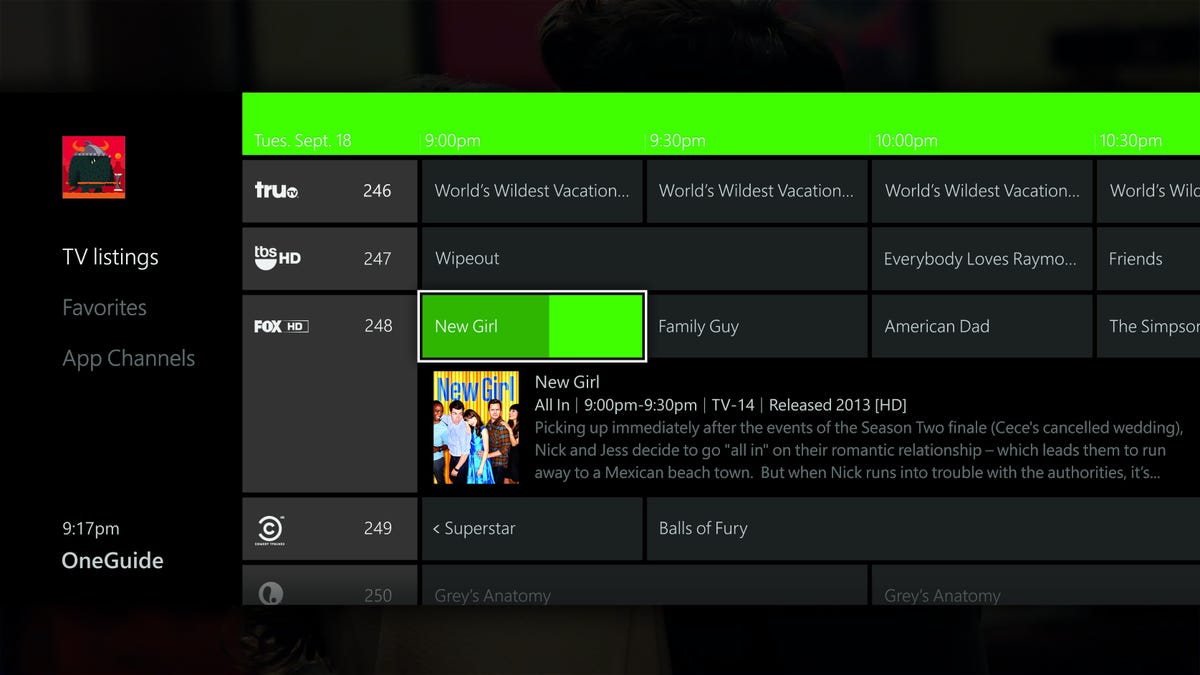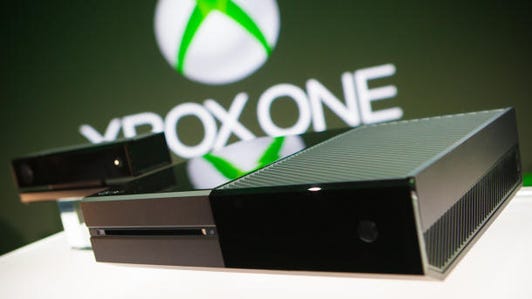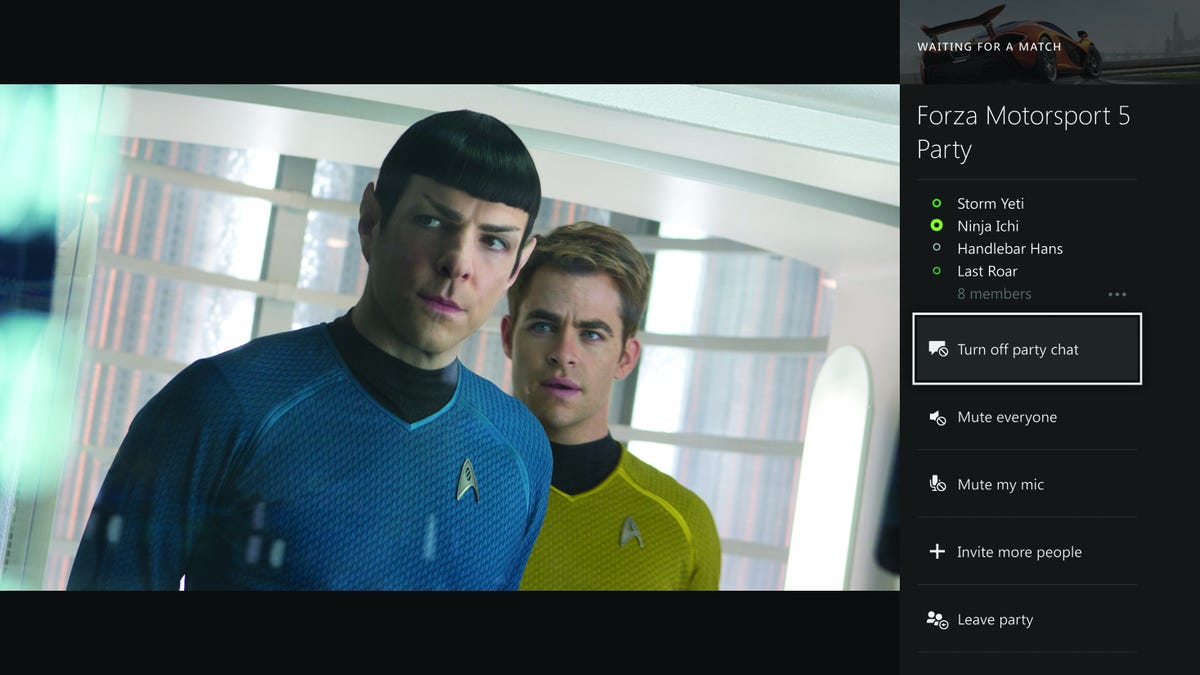The Xbox One is ready to be the hub of your living room.
That’s been the pitch since Day 1 for Microsoft’s next-gen console, but it wasn’t until this Wednesday that the CNET crew had a chance to check out many of the Xbox One’s home entertainment features in person.
We already knew that the Xbox One would include Blu-ray playback, the TV overlay functionality called OneGuide, and built-in support for voice and motion control through the included Kinect. But many of the specifics have been hard to come by, especially regarding the challenges of integrated TV.
The soon-to-be released console was set up in a homelike environment with a standard Time Warner cable box, and while most of the demo was tightly scripted, I had the chance to nail down some of the lingering details of how the Xbox One will work in the living room.
We take a look at the Xbox One (pictures)






Not much DVR support
Seeing the OneGuide in action for live TV is pretty impressive; it lets you browse TV listings using voice and the controller much faster than a standard cable box. But when it comes to DVR control, the Xbox One is a lot less capable.


Microsoft
For example, it’s easy to track down a program airing later in the day using OneGuide, but once you find it, there’s no way for the Xbox One to schedule a recording — you need to pick up your cable box remote. Similarly, OneGuide doesn’t know what’s currently in your DVR, so if you tell Kinect to find that episode of “Parks and Recreation” you recorded last night, you’ll come up empty. You can always switch over to your standard cable box remote to deal with DVR content, but that’s well short of the “single user interface” that the Xbox One is aiming to be.
It’s not a surprising limitation, as it’s the same stumbling block that Google TV and others have continually run into. But if you’re the kind of TV watcher who rarely watches live TV these days, it pushes those “one box to rule them all” dreams just a little farther away.
‘App channels’ puts Hulu in your channel guide
One cool new aspect of OneGuide Microsoft showed off is a feature called “app channels.” This integrates content from streaming services like Hulu Plus and Xbox Videos right into OneGuide, and apparently the platform will be open to any app maker who wants to develop for it. It was hard to gauge how useful this feature will be from the demo, but conceptually it’s fascinating. Putting streaming services like Hulu Plus (or, in the future, Netflix and YouTube) right next to bona fide TV channels like Comedy Central or Fox even further blurs the line between Internet and TV content.
Play To, but not regular DLNA, is supported
It’s a good-news, bad-news story for prospective Xbox One users planning to stream content from a network-attached storage (NAS) drive. The Xbox One is capable of playing any video format supported by Windows and has some support for DLNA, but only DLNA devices that use Microsoft’s “Play To” standard. At least that’s the official party line from Microsoft right now. I wouldn’t be surprised if standard DLNA devices worked in some capacity, but perhaps not as reliably.
Expect fewer apps at launch
If you’re a Live Gold subscriber, the Xbox 360 has a huge library of streaming-media apps, including Netflix, HBO Go, Rhapsody, and Xfinity TV. Don’t expect all the same apps to be available on the Xbox One at launch.
Xbox One launch titles (pictures)






The initial slate of apps Microsoft has announced is pretty good, but the company is only promising they’ll be available sometime between the launch day and spring 2014. Here’s the full list:
- Amazon Instant Video
- Crackle
- CWTV
- ESPN
- FOX Now
- FXNOW
- HBO GO (coming soon)
- Hulu Plus
- Machinima
- Muzu TV
- Netflix
- Redbox Instant by Verizon
- Target Ticket
- TED
- The NFL on Xbox One
- Twitch
- Univision Deportes
- Verizon Fios TV
- Vudu
And the wait may be longer than you’d expect with the Xbox One, as Microsoft is pushing app developers to build Xbox One-specific interfaces, rather than just cut-and-pasting the existing experience from the 360.
‘Snap’ is cool, but the audio is mixed
The Xbox One’s “snap” feature is awesome, letting you run two apps at once, with one of them in a picture-in-picture window. But it was surprising to learn in the demo that the audio between the two windows would be mixed together, rather than you getting to pick either the primary or secondary window’s audio.


Microsoft
For example, that means if you’re playing Forza 5 while keeping tabs on an NFL game in a picture-in-picture window, you’ll be listening to both at the same time, which seems like a recipe for sensory overload. Maybe it works better in practice than it does in theory — I didn’t get to hear much “mixed” audio — but I’m hoping this will get fixed early, as it seems to be a pretty big disincentive to using the snap functionality.
IR blasting works with TVs, cable box, and AV receivers
The Xbox One controls the rest of your home theater gear using an integrated IR blaster, similar to how Logitech’s Harmony Smart Control works. The Xbox representative actually name-checked Harmony a few times, and it’s an apt comparison, as during the initial setup you’ll need to enter the model number of your TV, amp, and cable box so they can be controlled.
Impressive tech, even with the caveats
Even though the Xbox One may have some limitations when it launches on November 22, it was hard not to be impressed with the TV tech in person. With near-instant switching between TV and gaming, picture-in-picture multitasking, and voice control of live TV, it all feels like a significantly different experience than anything the Xbox 360 could offer. And it’s easy to forget that when the Xbox 360 and PS3 launched, neither offered streaming-video services like Netflix, so the Xbox One experience of today is likely to be a lot different from what it ends up becoming.
We’ll have to live with the Xbox One in a real home environment to see how well it really acts as a living-room hub, but there’s no doubt that Microsoft is laying some important groundwork that could pay off later.




